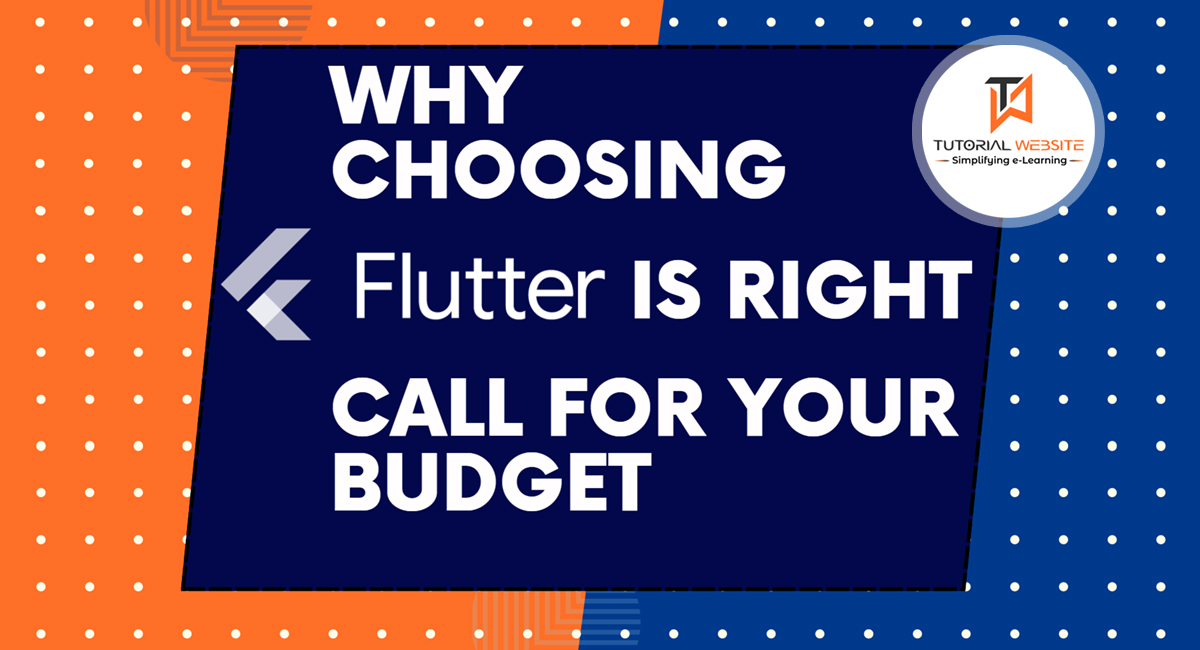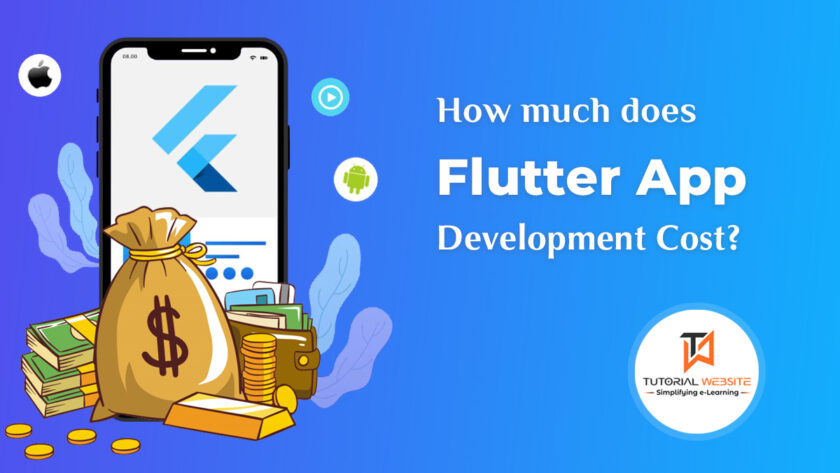The development of cross-platform apps is slowly taking over native apps. This app development approach is much more efficient in terms of time, cost and productivity. Performance was the main advantage of native apps. However, new cross-platform frameworks give developers more power, so it is no longer their strong suit. Moreover, cross-platform frameworks like React Native, Flutter, and Xamarin enable businesses to launch apps quickly. There are already numerous benefits to choosing cross-platform technology. Evidently, Flutter is one of the popular choices among businesses and developers. Here are some reasons why Flutter is more popular than any other framework.
What is Flutter, and what makes it a suitable choice for your project?
Google created Flutter in 2017 as an open-source software development kit. It is a platform that allows building captivating apps across multiple operating systems like iOS, macOS, Android, and Linux from a single codebase. A few of the innumerable advantages of Flutter are its fast, stability, flexibility, and reliability. According to Statista, by 2021, the most popular cross-platform mobile framework used by global developers is Flutter. Developers favored this framework as it is easy to learn and use.
Suggested Read: Flutter vs. React Native – What to Choose as Beginner?
In what ways does Flutter benefit you?
- Use of customizable widgets
Flutter offers a myriad of widgets to developers and allows them to reuse components in different parts of the app and customize them. It simplifies and speeds up the process of designing a user interface.
- Great Performance
In comparison to other cross-platform technologies like React Native, Flutter’s performance is as good as native mobile technologies. Furthermore, it provides best-in-class security due to its native code compliance.
- Effortless Maintenance
Flutter offers easy maintenance. It has a single codebase, so developers can check errors and issues without having to go back and forth. Clients don’t have to spend a lot of money on changes and modifications since maintenance is efficient.
- Support from Google
Being an open SDK from Google, Flutter has a huge community of developers who add ingenious solutions to help the rest of the community. This makes it more suitable for advanced application development.
When you should choose Flutter
For UI-heavy applications, Flutter is a prime choice because it gives you control over every pixel. It is also ideal for projects that don’t require complex integrations. While Flutter is constantly evolving, This technology will soon be as powerful as native technologies.
Now that you have a clear and precise idea of how Flutter can benefit your next project, you might be wondering how much exactly it costs to develop an app and whether is it in your budget or not. You can get the leverage of leading Flutter app development services to figure that out. But now, let me shed light on what factors are there that affect primarily the cost of app development.
What factors influence the cost of Flutter App Development
Many factors determine the cost of app development, and we will go through them one by one, so you can have a better idea of how Flutter is the right pick for your budget.
App size and complicacy
As you add more features, the size of an app gets bigger. According to the number and complexity of their features, applications are categorized as ‘low’, ‘medium’, or ‘high’. Accordingly, the number of app features affects every other factor, including the scope of the app, the development hours, the tools and technologies required, and the size of the MVP.
Tools and technologies
Among all cross-platform app development techniques, Flutter is inherently a low-cost option. Compared to native technologies, it is much more cost-effective. There is no need to create separate wireframes for different screen sizes. You can even make them responsive to various screen sizes.
App design
Application design is one of the significant factors. As the form is equally important as functionality. App design is focused on how the app looks and acts. How the users’ interaction will take place. And consumers will likely return for more if the app’s design is well-rounded and convenient.
Third-party integration
Third-party integrations provide external features through tools or APIs. Biometric verification, auto-filling forms, and two-factor authentication are some of the features of modern apps. Most of these integrations are subscription-based or pay-per-use. As a result, the cost depends on how often you use it. In time, your target audience will grow, and you will have to pay a higher price.
The backend of an app
Backends are the parts of programs that handle many different functions. In addition to storing and connecting data, it interacts with other apps on the Internet and performs actions within its framework.
In this way, the backend plays an integral role in estimating the cost of developing a Flutter app. It stores and provides secure access to data for tracking user behavior and customizing the app. Additionally, users can get instant assistance through push notifications. Data encryption and app security codes are handled by the backend, which is equipped with all security measures.
Post-launch service and upgrades
A few Flutter app development companies offer free maintenance services for a limited period. However, after the first two months, especially after launch, it would be prudent to hire a dedicated maintenance company. The cost of these services ranges from 15-22% of the overall development budget, so you’ll have to set aside some cash flow for them.
Additional costs
- Releasing an app in the app market
A developer account is required to release an application on Google Play and the App Store. Both stores charge fees for that. Furthermore, app markets’ policies and requirements necessitate additional time for developers to prepare their applications for publication.
- App security
The process of securing applications takes time and additional resources, such as encryption tools.
Why Flutter App Development is budget-friendly
- Brings in more investors
A minimum viable product (or MVP) represents the basic features and functions of an application. A Flutter MVP is compatible with multiple platforms and provides a high-quality user experience. Your project will be able to attract many investors and be funded as a result.
- Graphic-oriented
The Flutter framework supports high-end graphics. By using libraries and tools like Material Design, it helps create consistent and visually appealing user interfaces across a variety of devices.
- Development span
As a result of Flutter’s cross-platform advantage, development is faster. Flutter makes it possible to develop and publish apps within two to three months for businesses.
- Hot reload
Developers can test their programming fixes in real-time with the Hot Reload option. Emulators are used by quality assurance professionals to analyze the quality of their debugging and code fixes. Unlike other technologies, Flutter allows you to update these changes in just a few seconds.
These distinctive qualities of Flutter make it the most preferable option for those who aspire to develop a superior app compatible across diverse platforms.
Conclusion
Flutter app development enables modern entrepreneurs to write code once, test it, and deploy it on as many platforms as they like – reducing time and effort. As a result, you can launch your mobile product just when your target audience needs it, allowing your business to grow exponentially. Those of you who are still with me, know that Flutter is your ticket to being ready.

Suvarna Parikh is a Tech content writer at ultroNeous Technologies. She contributes articles on various topics and balances the informative content with an engaging read. (Hooks are always there.) When she is not writing and editing, you can find her reading or watching thriller dramas.


